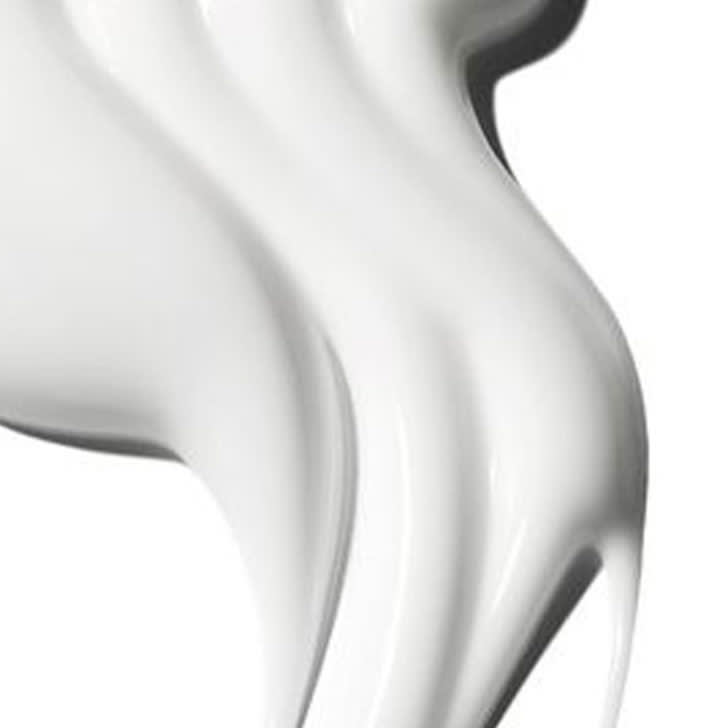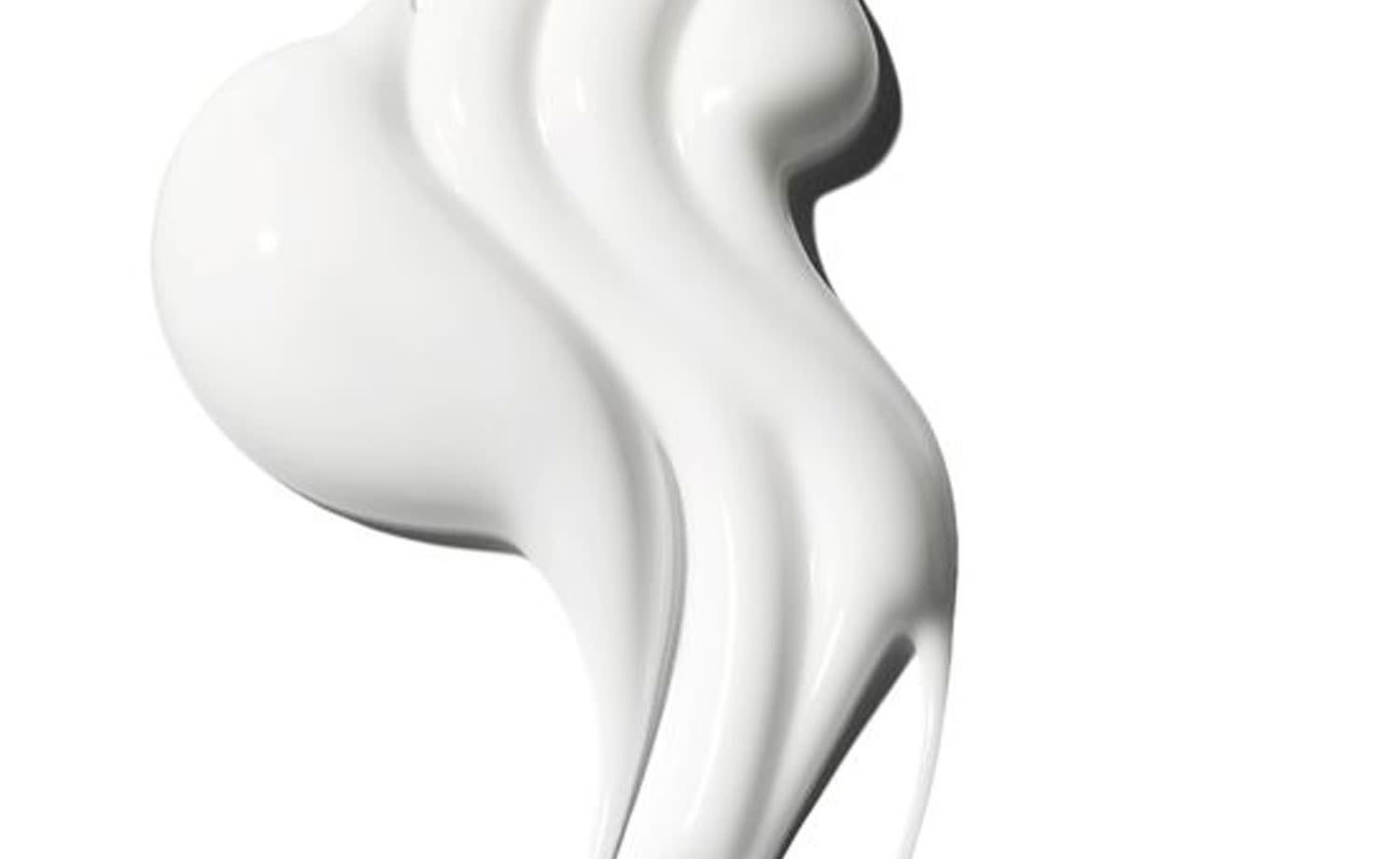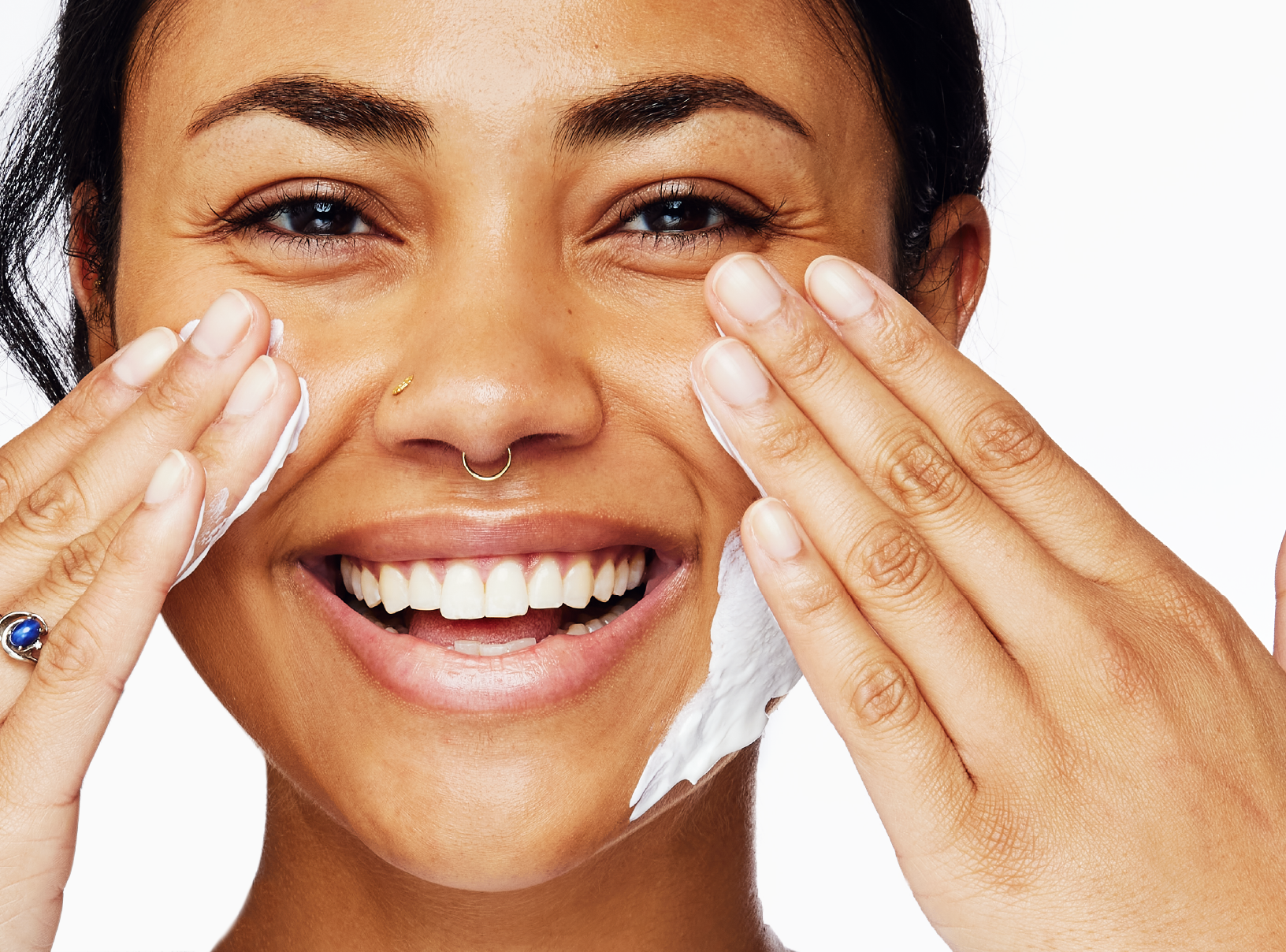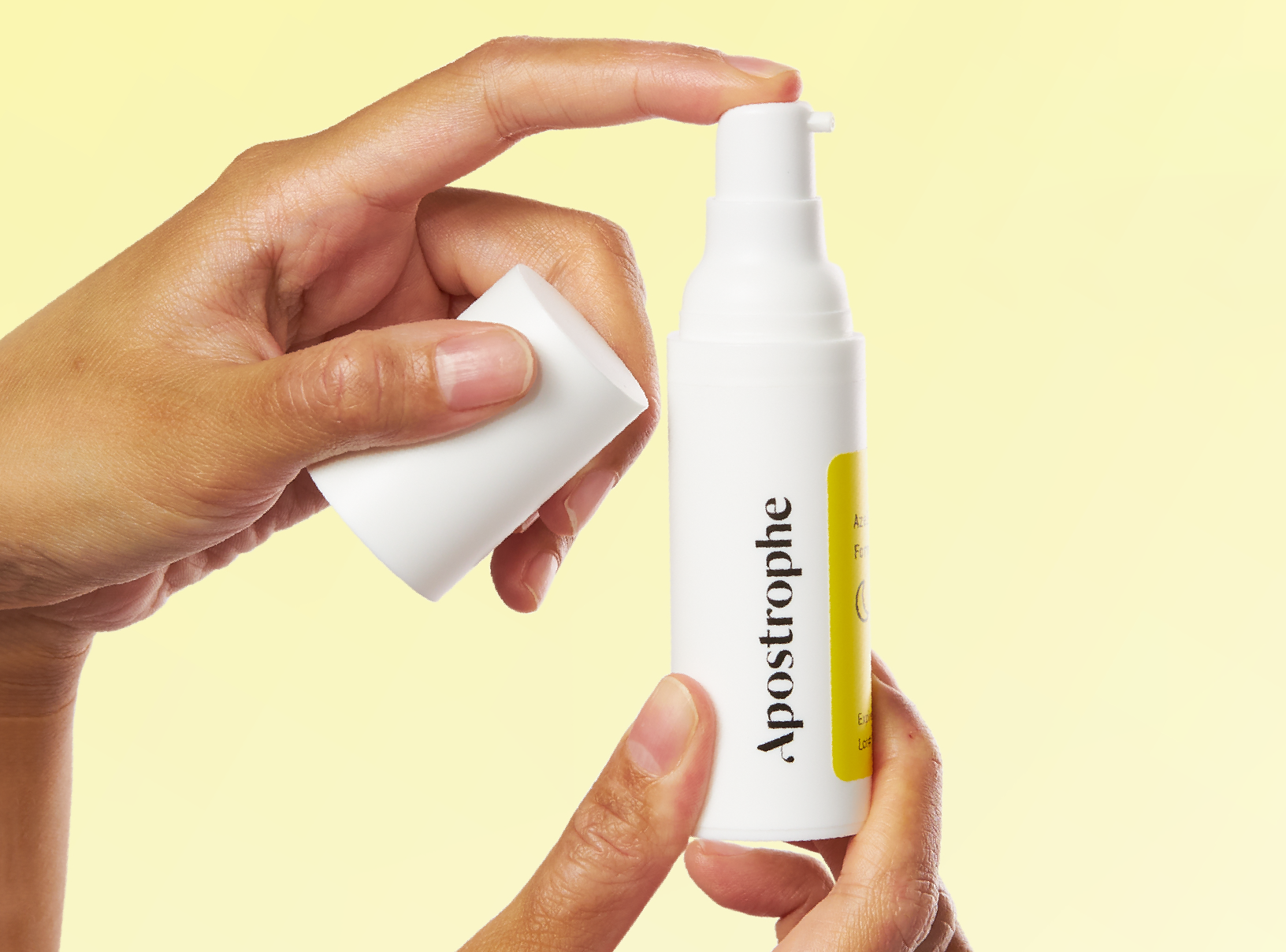Education
How to Get Rid of Forehead Wrinkles: Proven Methods


SHARE
Education
How to Get Rid of Forehead Wrinkles: Proven Methods
Medically reviewed by Mary Lucas, RN
Written by Apostrophe Team
Last updated 4/1/2024
Few things are as frustrating as looking at a photograph or into the mirror and noticing deep, obvious wrinkles on your forehead.
Forehead wrinkles are a common sign of aging. Like other wrinkles, they’re caused by natural changes in the composition of your skin that happen as you get older, as well as some of your habits and lifestyle choices.
While some aspects of skin aging are unavoidable, forehead wrinkles can generally be treated using skin care products and cosmetic procedures. Changing your habits and lifestyle may also help to prevent your forehead wrinkles from getting worse.
Below, we’ve explained what forehead wrinkles are and why they develop. We’ve also covered the most effective options for getting rid of forehead wrinkles, from over-the-counter products to prescription medications, cosmetic procedures, and more.
Forehead Wrinkles: The Basics
Forehead wrinkles develop naturally as you get older due to age-related changes in your skin. As you get older, your skin starts to become thinner and less elastic. Factors such as gravity start to take a toll on your skin, causing sagging and wrinkling to develop.
Experts believe that using your facial muscles in certain ways can contribute to wrinkles. Simple actions like squinting, raising your eyebrows, or smiling may cause forehead wrinkles to become more pronounced and obvious over time.
Wrinkles and other signs of skin aging are closely linked to sun exposure. The more time you spend outdoors in sunny environments, the higher your risk of developing wrinkles and other signs of aging early.
Research shows that smoking can contribute to wrinkles, meaning you’re more likely to develop wrinkles if you use tobacco products.
Wrinkles are treatable. You can often lighten wrinkles using over-the-counter treatments and prescription medications. Deeper wrinkles can often be treated with procedures like Botox, fillers, dermabrasion, and others.
Although treatments for wrinkles are effective, the best way to avoid them is to prevent them from developing in the first place by living a healthy lifestyle and limiting the total amount of time you spend in direct sunlight.
How Do Forehead Wrinkles Develop?
Forehead wrinkles, just like other wrinkles that can develop on your face, neck, and hands, are the result of your skin’s aging process.
As you get older, your skin changes. Over time, it becomes less elastic, meaning it can’t spring back into place as easily as it once could. Gravity starts to affect it, causing some areas of the skin to sag. Other signs of aging, such as age spots and skin tags, start to grow.
You may also notice that your skin becomes thinner, with less fat beneath its surface, giving it a different texture and feel.
A variety of factors all play a role in this process. One of these is a natural decline in your skin’s ability to replace itself that occurs as you age.
Just like your hair, nails and other parts of your body, your skin is constantly renewing itself via a process called epidermal turnover. Over time, cells from the basal layers of your skin make their way upwards to the surface, replacing older skin cells on the outermost layer of your skin.
This process helps to maintain your skin and repair damage caused by factors like temperature, wind and UV radiation.
As you age, your body needs more time to complete this process. The turnover rate of your skin slows, increasing the amount of time that old, dying skin cells spend on the surface layer of your skin.
During this process, the dermis, or the middle layer of your skin, starts to become thinner. The dermis is rich in collagen and elastin — two essential structural proteins that give your skin much of its elasticity and strength.
At the same time as this natural aging process occurs, several environmental factors also take a toll on your skin.
When you spend time in the sun, especially without protecting your skin, UV radiation from the sun damages the collagen fibers of your skin and affects its ability to produce elastin, worsening the effects of aging.
As you make facial expressions by contracting your forehead muscles, your skin settles into the same position over and over again, creating grooves that eventually turn into wrinkles.
Finally, unhealthy habits like smoking and drinking too much alcohol affect your skin’s ability to repair itself and stay hydrated, further worsening the effects of aging on your skin.
Although the impact of these factors is tiny on a day-to-day basis, over the course of years and decades they can have a noticeable impact on the health of your skin, leading to fine lines and wrinkles on your forehead and other parts of your face.
How to Treat Forehead Wrinkles
While you can’t completely stop aging, steps like living a healthy lifestyle, avoiding excess sun and making use of skin care products and medications can help to slow the effects of aging on your skin and make forehead wrinkles less obvious.
Below, we’ve listed proven, science-backed options for treating forehead wrinkles, starting with changes that you can make to your lifestyle.
Habits & Lifestyle Changes
While lifestyle changes alone won’t make deep wrinkles disappear, living a healthy lifestyle can help to prevent wrinkles from worsening. Try the following techniques to prevent forehead wrinkles and improve the health of your skin:
Limit the time you spend in the sun. There’s nothing wrong with spending a moderate amount of time in direct sunlight. However, it’s important to limit the total amount of time you spend in intense, direct sunlight to protect your skin from UV damage. During summer, try to avoid excess sun exposure from 10am until 4pm, especially if it’s a bright, sunny day. Try to spend time outdoors in off-peak sunlight hours, when the sun is less intense and you’re less likely to get sunburned.
Use sunscreen. When you spend time in the sun, make sure to use sunscreen to keep your skin protected. Choose a broad-spectrum, SPF 30+ sunscreen and make sure that you apply it at least 15 minutes to 30 minutes before you go outside.
Avoid tanning. Just like natural sunlight, tanning beds and sun lamps are major sources of UV radiation. As such, both are best avoided if you’re interested in preventing wrinkles and other signs of aging.
Wear sunglasses. Wearing sunglasses can help you to avoid squinting — a repetitive facial expression that may contribute to forehead wrinkles and crow's feet (small, deep wrinkles that can develop near the corners of your eyes). Use sunglasses with built-in UV protection. The American Academy of Ophthalmology recommends choosing sunglasses that are polarized (glare-blocking) and designed to block 99+ percent of UV light.
Stop smoking. In addition to harming your cardiovascular health and increasing your risk of developing several forms of cancer, smoking significantly increases the rate at which your skin ages, potentially causing you to develop wrinkles earlier.
Limit your alcohol consumption. Although there’s nothing wrong with enjoying a beer, glass of wine, or cocktail every now and then, drinking alcohol too often or in excess can dehydrate your body, damage your skin and increase the effects of aging. As you get older, drinking can also have other negative effects on your health. To avoid these issues and keep your skin healthy, try to limit your alcohol consumption to the U.S. Dietary Guidelines recommendation of a maximum of two servings per day.
Focus on healthy sleep. Research has found that poor quality sleep is closely linked to aging of the skin. For example, one study published in 2015 found that people with good sleep habits tend to have lower skin aging scores than their peers. For optimal health and wellbeing, try to get seven or more hours of sleep per night.
Exercise regularly. While there isn’t any research on exercise and wrinkles specifically, some studies have found that exercise can improve blood circulation and may help your skin retain its youthful appearance as you age.
If you can, sleep on your back. Although your sleeping position won’t affect your skin’s elasticity or collagen content, research shows that sleeping on your side may contribute to facial lines called “sleep wrinkles” that can affect the sides of your forehead. If you can, try to sleep on your back to avoid putting pressure on your face. If you’re a side sleeper, consider buying an anti-wrinkle pillow that provides support for your face and prevents lines from developing.
Stay hydrated. There are a million reasons why you should make sure you’re drinking an adequate amount of water, when it comes to skin health, it’s doubly important.
Aside from water making up a large portion of the human body, it’s also the lifeblood of your skin. Though there isn’t a concrete recommendation for just how much water you should be drinking in a day, 125 ounces (a little over 15 cups) per day seems to be the accepted amount.
Skin Care Products & Medications
Several over-the-counter products and medications may help to reduce the effects of aging on your skin and get rid of wrinkles. Try the following:
Moisturizer. Using a daily moisturizer is a cheap and effective way to keep your skin healthy and reduce the effects of aging. Moisturizer helps your skin to retain moisture, helping it to retain its youthful characteristics as you get older. If you’re prone to acne or have sensitive skin in general, try to use a non-comedogenic moisturizer.
Tretinoin. A topical retinoid, tretinoin speeds up your epidermal turnover process and allows your skin to produce new cells at a faster pace. This helps to reduce wrinkles, fine lines and rough-feeling patches of skin. As a topical medication, tretinoin works best when it’s applied directly to areas of your skin with wrinkles and other signs of aging on a daily basis. Tretinoin could be one of several active ingredients in your Apostrophe Custom Anti-Aging Cream. You can learn more about how it works and its effects on wrinkles in our full guide to tretinoin for wrinkles and anti-aging.

PRESCRIPTION TRETINOIN
Target acne, dark spots, and signs of aging with this science-backed ingredient.
Cosmetic Procedures
Several cosmetic procedures are used to treat wrinkles and other signs of aging that can affect your forehead. Some of these involve stripping away or resurfacing the outer layers of your skin, while others involve filling in lines or targeting the muscles that cause wrinkles to develop.
Popular, science-based cosmetic procedures for treating forehead wrinkles include:
Botulinum toxin (Botox®). Botox is an injectable medication made from the Clostridium botulinum bacteria. It’s injected into your facial muscles to cause a temporary paralysis that stops the muscle from contracting and contributing to wrinkles. Botox injections are effective, but the results aren’t permanent. On average, Botox lasts for 3 to 12 months, after which you’ll need to get additional injections to maintain the results. Each round of Botox injections can cost several hundred dollars. Contrary to popular belief, stopping Botox won’t cause your wrinkles to get worse. If you stop using Botox, your forehead muscles will become active again and your wrinkles will return to their previous state.
Dermal fillers. Dermal fillers are gel-like fillers that are injected into certain parts of your face. They’re designed to restore volume and fullness, particularly in areas of your face that lose subcutaneous fat over time. Although fillers don’t improve all types of wrinkles, they can help to soften creases and wrinkles in some parts of your face. They’re also used to fill in scars, deformities and other blemishes that can affect your appearance. Like Botox, the results of dermal fillers usually aren’t permanent. Depending on the filler you choose, you’ll typically need to get filler injections every six months to two years to maintain your results. Like Botox, each round of filler injections can cost several hundred dollars or more.
Chemical peeling. Chemical peeling involves stripping away the outermost layer of the skin using an acid-based solution. As the old skin peels away, new skin develops in its place with fewer wrinkles, ace spots and other signs of aging. Chemical peels can vary in strength from “lunchtime” peels to deep peels that penetrate further into your skin. This type of treatment is often effective for wrinkles, but can take several weeks to heal. Like other procedures for wrinkles, chemical peeling can vary in price. A mild peel may only cost a few hundred dollars, while deeper peels designed to significantly rejuvenate your skin may cost several thousand dollars.
Laser skin resurfacing. Laser skin resurfacing, or laser peeling, involves stripping away the outer layers of your skin using a laser. Just like with a chemical peel, a new layer of skin grows in its place without the previous wrinkles, fine lines and imperfections. Laser skin resurfacing is generally effective, but like other exfoliating procedures, it may take several weeks or months for your skin to totally recover. Pricing for this procedure is usually in the thousand-dollar range.
Dermabrasion. Dermabrasion involves “refinishing” the top layers of your skin, helping to improve its appearance and make fine wrinkles, scars and other facial imperfections less visible. Dermabrasion can be performed on the entire face or on specific areas with wrinkles or other issues. The procedure can cost $1,000 or more, with recovery often requiring a period of several weeks.
Facelift surgery. A facelift, or rhytidectomy, is a surgical procedure that’s designed to reduce the signs of aging in your face and neck. This type of procedure can improve sagging, loose skin, fat loss and fold lines that may develop on your face. A facelift is a major procedure with a relatively long recovery time. Although it’s highly effective at improving certain aspects of facial aging, it isn’t the best option to consider for forehead wrinkles. The cost of facelift surgery can vary depending on your location and the extent of the procedure. On average, facelift surgery costs approximately $7,000 to $8,000.
Tips & Recommendations for Dealing With Forehead Wrinkles
If you’re starting to notice forehead wrinkles, it’s important to take action as quickly as you can to prevent them from getting worse. Use the tips and recommendations below to keep track of your progress and get the best results from your treatment:
Start early. The earlier you take action against wrinkles, the more effective you’ll likely be. It’s best to start using moisturizer and treatments like tretinoin as soon as you begin to notice wrinkles developing.
Take sun exposure seriously. Although a tan can look nice, the risks of sun exposure are very real. Not only does spending too much time in the sun age your skin — it’s also a major risk factor for skin cancer.
Track your progress. If you’re using medications like tretinoin or undergoing cosmetic procedures to treat wrinkles, track your progress by taking photos of your forehead and other wrinkle-affected areas every month. This way, you’ll be able to check if your treatments are working by monitoring changes in your skin over time.
Be careful of treatments and products that promise miracles. While many skin care products and medications are effective, few will transform your skin or cause wrinkles to disappear in just a few days or weeks. As such, it’s best to be cautious of products or treatments that promise miracles for your skin. Look up real, unbiased feedback before you rely on any treatment to get rid of your wrinkles or other signs of aging.
Remember that you can’t control all aspects of aging. While a healthy lifestyle and a focus on skin care can make forehead wrinkles and other signs of aging less visible, it’s impossible to completely stop skin aging. Remember that some aspects of skin aging are outside of your control. Focus on doing as much as you can, but don’t be surprised if you notice some wrinkles developing even with a proactive effect to keep your skin healthy and wrinkle-free.
In Conclusion
Forehead wrinkles are a common, normal sign of aging. While you can’t completely stop aging, living a healthy lifestyle and making use of the science-backed treatments listed above can help you to make your forehead wrinkles less visible and prevent them from worsening.
If you have deep, obvious forehead wrinkles, cosmetic treatments such as Botox, dermal fillers, chemical peeling or others may help to make them less visible.
Learn More About Anti-Aging Skin Care
The key to aging gracefully is simple: take good care of your skin, both inside and out. Our full guide to anti-aging skin care covers exactly how you can do this, from maintaining the right habits to making smart, effective use of anti-aging products and medications.
This article is for informational purposes only and does not constitute medical advice. The information contained herein is not a substitute for and should never be relied upon for professional medical advice. Always talk to your doctor about the risks and benefits of any treatment. Learn more about our editorial standards here.
Shop this post

Tretinoin
Like what you just read? Sign up for our email list to get the scoop on skincare science delivered straight to your inbox.

Education
What is milia?
What is milia? Today, we’re jumping into one type of bump that you may have heard about most commonly in infants — milia.
Read More
Education
Best moisturizer for acne-prone skin
If you have combination acne-prone skin, figuring out which moisturizer is best for your skin might be tough. In this guide, we break down the best moisturizer for combination, acne-prone skin.
Read More
Education
How to build a face care routine
As you get into skincare, it might seem overwhelming, especially trying to figure out the order you're supposed to apply products in. Below, we detail how to build a face care routine for your skin!
Read More
